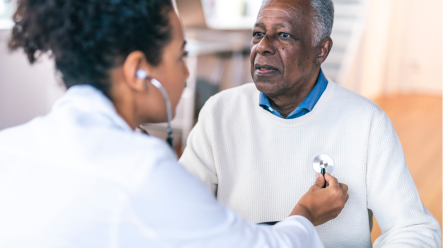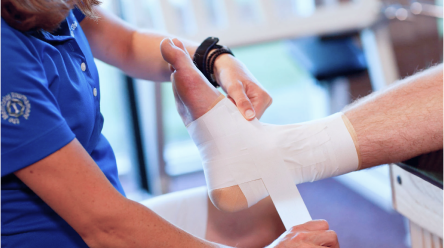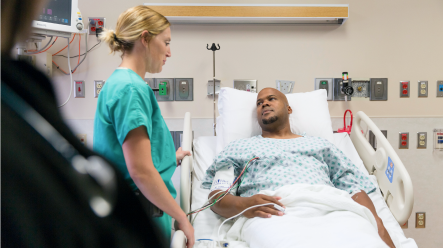Where to Go for Care
Primary | Urgent | Emergency
You have the best experience when you choose the right care from the start.
Find the right care for you
Routine

Primary Care
Comprehensive care for everyday medical needs from providers you know and trust.

Lowest cost*
Conditions Treated
-
Cold, flu or COVID-19 symptoms (body ache, congestion, cough, fever, sinus infection, sore throat)

-
Chronic disease/condition

-
Health screening examinations (biometric screening for work)

-
Mental health concern (anxiety, depression)

-
Preventive care

-
School and sports physicals

-
Vaccine

-
Blood pressure checks or tests

-
Blood sugar checks or tests

-
Chronic headache

-
Drug/alcohol use maintenance/treatment

-
Ear ache and infection

-
Fatigue

-
Isolated back pain

-
Medication refill

-
Newborn care

-
Nutrition

-
Pink eye, red eye, itching

-
Post injury follow-up

-
Rashes

-
Referral to a specialist

-
Routine care

-
Skin concerns

-
Sexually transmitted infections

-
Suture/staple removal

-
Urinary, kidney and bladder infections

-
Vaginal itching or irritation

-
Weight Management

-
Women's health concern

-
Wound check (Increased pain, tenderness, redness, swelling or warmth around the cut or injury, fever)

SEE ALL
Open weekdays
Hours may vary
Appointment availability may not be immediate.
Same-Day

Urgent Care
Convenient treatment for minor illnesses and injuries with same-day appointments available.


Moderate cost*
Conditions Treated
-
Cold, flu or COVID-19 symptoms (body ache, congestion, cough, fever, sinus infection, sore throat)

-
Animal and insect bites and stings

-
Cuts that may need stitches

-
Injuries (possible broken bones, sprains, dislocations)

-
Minor allergic reactions

-
Minor burns

-
Pink eye, red eye, itching

-
Rashes

-
Asthma Flare-up (wheezing, not improving with inhalers, no difficulty breathing)

-
Earache and infection

-
Minor nosebleeds

-
Nausea, vomiting or diarrhea without bleeding, abdominal pain or dehydration

-
Sexually transmitted infections with symptoms

-
Sprains and strains

-
Suture/staple removal

-
Urinary, kidney and bladder infections

-
Wound check (Increased pain, tenderness, redness, swelling or warmth around the cut or injury, fever, or other changes)

-
Head injury (bump, bruise, or cut on the head without loss of consciousness)

 Video visit eligible
Video visit eligible
SEE ALL
Open daily
9 AM-9 PM
Schedule online, call ahead or walk in for same-day care.
Life-Threatening

Emergency Care
Immediate treatment for severe and life-threatening conditions from a team of experts.



Highest cost*
Conditions Treated
-
Difficulty breathing/severe shortness of breath (asthma, COPD, heart failure, etc)

-
Chest pain or injury

-
Heart beating fast or irregular

-
Major burns

-
Head injury (bump, bruise, or cut on the head with loss of consciousness)

-
Seizures

-
Signs of stroke such as weakness or numbness of the face, arms, legs; sudden loss of speech or vision

-
Major cuts

-
Severe allergic reaction

-
Uncontrolled bleeding

-
Abdominal pain or injury

-
Blood pressure concerns

-
Blood sugar concerns

-
Concerns for blood clot

-
Confusion or changes in mental function, such as unexplained drowsiness or disorientation

-
Coughing up blood

-
Critical labs (directed by PCP)

-
Dehydration

-
Eye pain with sudden visual changes

-
Fainting/passing out

-
Head pain, sudden onset or change in headache or migraine pattern

-
Kidney stones

-
Life-threatening conditions

-
Light-headedness

-
Limb swelling without injury

-
Major animal bite

-
Nausea, vomiting with abdominal pain, dehydration, blood in stools or vomit

-
OB emergencies (more than 16 weeks pregnant)

-
Persistent dizziness

-
Poisoning or exposure to dangerous chemicals

-
Rectal bleeding

-
Severe head injury

-
Sexual assault

-
Sudden onset severe pain

-
Suicidal thoughts

SEE ALL
Open
24/7
Patients are seen based on severity. Extended wait times are possible.
* The information on this page is intended for informational purposes only. Cost rankings are based on estimates and may not reflect actual costs. If you are experiencing a life-threatening emergency, call 911 or go to the nearest emergency department.